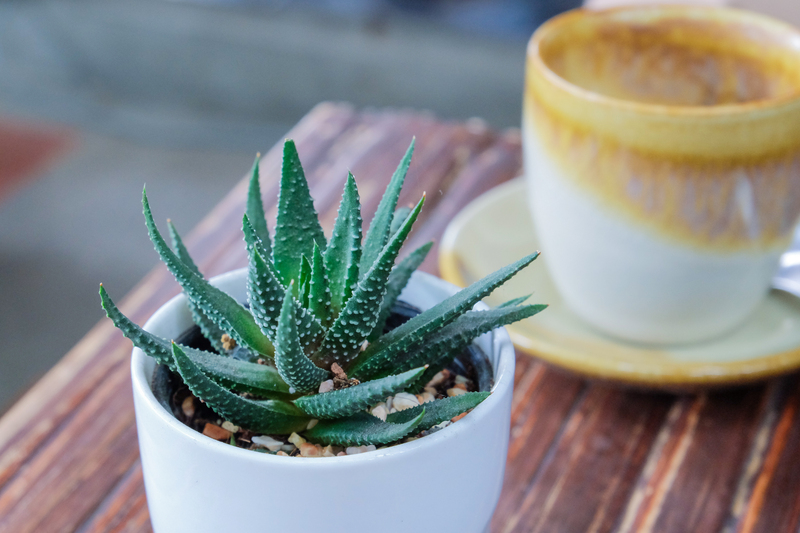Designing a Fun and Engaging Garden for Children
Posted on 29/06/2025
Designing a Fun and Engaging Garden for Children
Creating an exciting garden for children can ignite a love for the outdoors, foster creativity, and encourage healthy habits. Whether you have a sprawling backyard or a cozy terrace, thoughtfully designing a child-friendly garden can transform your outdoor space into a magical and educational playground. This comprehensive guide will walk you through everything you need to know about designing a fun and engaging garden for children, from planning features, choosing the best plants, to safety considerations and ongoing maintenance.
Why Build a Child-Friendly Garden?
A children's garden is more than just an area with a few bright flowers and toys. It's an immersive space where children can play, learn, and grow. Here are some key benefits of cultivating a fun and engaging garden for children:
- Encourages Outdoor Play: Active play helps in physical development and improves overall health.
- Stimulates Curiosity and Learning: Children learn about nature, science, and responsibility by interacting with plants and wildlife.
- Fosters Imagination and Creativity: A garden can be a castle, a jungle, or a fairy tale land in a child's eyes.
- Builds Emotional Connections: Hands-on gardening allows children to develop a nurturing relationship with their environment.

Planning Your Child-Friendly Garden
Good garden design for children blends fun, accessibility, and safety. Here's how you can start:
1. Involve Children in the Design Process
Ask your children what they want from their garden. Would they enjoy a play area, a vegetable patch, or a space to watch butterflies? Their interests are essential in creating an engaging environment. Encourage them to draw their dream garden and include their favorite colors, shapes, and features.
2. Allocate Zones for Different Activities
- Active Play Zone: Dedicated space for running, climbing, or sports.
- Quiet Zone: A cozy nook or reading area shaded by plants or a small teepee.
- Wildlife Zone: Areas with butterfly-attracting flowers, bug hotels, or a small pond for observing creatures.
- Growing Zone: Raised beds or containers for planting and harvesting vegetables, fruit, or flowers.
Varying the zones ensures that your garden is engaging for children of all ages and energy levels.
Choosing Child-Safe Plants
Selecting the right plants is crucial when designing a garden for kids. Choose species that are safe, tactile, and appealing. Here's how:
Avoid Harmful Plants
- Steer clear of toxic or prickly plants, such as foxglove, oleander, and certain mushrooms.
- Opt for child-safe varieties like sunflowers, marigolds, and nasturtiums.
Encourage Sensory Exploration
- Touch: Plants like lamb's ear and soft moss appeal to the sense of touch.
- Scent: Incorporate fragrant herbs such as mint, lavender, and rosemary.
- Sight: Choose bright, colorful flowers to attract pollinators and delight young eyes.
- Taste: Grow edible plants--strawberries, cherry tomatoes, or peas--so children can taste their harvest.
Integrating Fun Features for Kids
A well-designed children's garden includes elements that entice, challenge, and amuse. Consider these classic and creative ideas for your fun garden for children:
1. Play Structures
- Treehouses or Playhouses: Provide spaces for imagination and pretend play.
- Climbing Frames or Obstacle Courses: Boost coordination, balance, and confidence.
- Swings and Slides: Classic, timeless fun for all ages.
2. Nature Trails and Paths
Lay winding paths of stepping stones, logs, or mulch for children to follow. These can double as agility courses or simply lead to secret spots within the garden.
3. Sensory Gardens
Design areas where children can interact with textures, colors, scents, and sounds. Incorporate features such as:
- Water features (small ponds or fountains)
- Wind chimes or bamboo poles for sound
- Mosaics or colored pebbles for visual intrigue
4. Edible Gardens
A vegetable patch or berry bed teaches children about food origins, nutrition, and patience. Raised beds make planting more accessible for small hands.
5. Wildlife Habitats
- Install a bug hotel with sticks and pine cones.
- Add a bird feeder or butterfly house.
- Leave a small, wild area for discovering local fauna.
Ensuring Safety in a Children's Garden
Safety is paramount in any child-centric garden design. Here are essential tips for keeping children safe outdoors:
- Choose non-toxic, thorn-free plants.
- Avoid sharp-edged structures or unstable furniture.
- Provide shade to protect from sunburn--use trees, pergolas, or large umbrellas.
- Ensure play equipment is age-appropriate and securely installed.
- Fence off ponds or water features to prevent accidental falls.
- Keep paths clear and non-slip, even after rain.
- Store all gardening tools and chemicals completely out of reach.
Creative Ideas for an Engaging Children's Garden
1. DIY Discovery Stations
Set up areas for exploration and experimentation. For example:
- Bug-spotting station with magnifying glasses and insect ID charts.
- Weather station with a simple rain gauge, wind sock, and thermometer.
- Mud kitchen with old pots, pans, and natural ingredients like leaves or seeds.
2. Themed Gardens
Pick a theme and design your garden around it to boost engagement:
- Fairy garden: Tiny houses, mushroom seats, and whimsical sculptures.
- Dinosaur land: Fossil hunts, sandpits, and large-leafed plants.
- Storybook world: Nooks inspired by children's literature, like a secret garden or Hobbit hole.
3. Seasonal Features
- Plant bulbs for spring, sunflowers for summer, and pumpkins for autumn harvest activities.
- Hang a hammock or set up tents for summertime lounging.
- Add solar lights or lanterns to extend playtime into the evening.
Encouraging Children to Participate in Gardening
Active involvement helps children take pride in their garden. Here's how to nurture their interest:
- Let them choose seeds, bulbs, or plants at the garden center.
- Provide child-sized tools to make gardening comfortable.
- Teach basic skills--digging, watering, weeding--through games and songs.
- Set up a "my patch" area where your child can experiment with their own ideas.
- Celebrate successes--hold a sunflower height contest, photograph harvests, or make garden-fresh snacks together.
Maintaining an Engaging Garden for Kids
A flourishing child's garden requires ongoing care and refreshment:
- Rotate plantings seasonally to keep things fresh and interesting.
- Inspect play equipment and replace worn items promptly.
- Organize regular family gardening days to keep everyone involved.
- Encourage wildlife visits by topping up bird feeders and checking bug hotels.
Sustainable Gardening Practices for Children
Show children the importance of caring for the earth by introducing them to eco-friendly gardening:
- Start a compost bin for food scraps and garden waste.
- Collect rainwater in a barrel for watering plants.
- Plant native species to support local wildlife and reduce maintenance needs.
- Use natural pest control instead of chemical sprays.
Examples of Inspiring Children's Gardens
1. The Eden Project, UK
A globally renowned children's garden with play areas, rainforest biomes, and hands-on discovery workshops.
2. Chicago Botanic Garden, USA
Features an interactive kids' garden with water play, sensory paths, and edible plants for tasting.
3. Your Own Backyard
Draw inspiration from world-class gardens, but never underestimate the magic you can create right at home with a little creativity and thoughtful design!

Frequently Asked Questions About Designing Child-Friendly Gardens
What are the best plants for a garden for children?
- Sunflowers (quick-growing and impressive)
- Strawberries (edible and sweet)
- Marigolds (easy care and vibrant)
- Lavender (fragrant and attracts bees)
- Pumpkins (fun to grow and harvest)
How can I make my garden safe for children?
- Avoid toxic plants and chemicals.
- Supervise water features or cover them securely.
- Use non-slip materials for paths.
- Ensure all structures are sturdy and age-appropriate.
How do I keep children engaged in gardening?
- Give them ownership of small tasks or plots.
- Choose fast-growing or edible plants for instant gratification.
- Mix playful and educational elements, such as games, scavenger hunts, or craft projects.
Conclusion: Turning Your Outdoor Space into a Children's Paradise
Designing a fun and engaging garden for children is a rewarding project that blends landscape design, play, and education. With careful planning, creative features, and a bit of whimsy, your garden will be a source of endless joy and discovery. Remember to involve your children through every stage, encourage a lifelong respect for nature, and--most importantly--have fun together creating a vibrant, playful, and safe outdoor paradise!
Start today, and watch as your child-friendly garden grows into the heart of family life and adventure.

